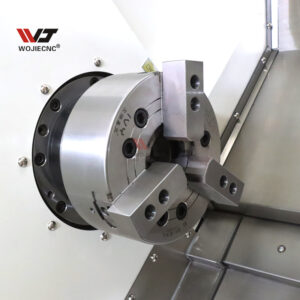Solutions for Unstable Machining Accuracy in CNC Machining
Improve the precision of mechanical equipment.
To improve the machining accuracy of CNC machine tools, machine tools should be regularly maintained and serviced, and the wear of key components such as guide rails and bearings should be checked and replaced as necessary. Adopt high-rigidity and high-precision machine tools to reduce the impact of mechanical errors on machining accuracy. At the same time, using high-quality lubricants and regularly lubricating machine tools can effectively reduce friction and wear.
Optimize tool management
When selecting tools, suitable tools should be selected according to the workpiece materials and process requirements, and tool wear detection should be carried out regularly. For tools with severe wear, they should be replaced or repaired in a timely manner. The monitoring system can be used to monitor the tool status in real time, provide early warning of tool wear, and ensure that the tool is always in the best condition during the machining process.
Reasonable adjustment of processing parameters.
In the processing process, the parameters such as cutting speed, feed and cutting depth should be reasonably set according to the specific characteristics of the material and the processing requirements. The best combination of processing parameters can be found through trial cutting and accumulation of experience to ensure stability. At the same time, the use of advanced CNC systems can adjust the processing parameters in real time and further improve the processing accuracy.
Improve the fixture design.
The fixture design should fully consider the shape and processing requirements of the workpiece to ensure the stable fixation of the workpiece during processing. High-precision fixtures can be used, as well as auxiliary tools such as positioning pins and clamping devices. To ensure that the position of the workpiece does not change during processing. In addition, the wear of the fixture should be regularly checked, and timely maintenance and replacement should be carried out to ensure the accuracy and stability of the fixture.
Improve operator training
The technical level of the operator directly affects the processing accuracy. Therefore, the operator should undergo regular training to improve his professional knowledge and practical skills. The training content should cover the basic principles of CNC machining, the setting of machining parameters, the selection and maintenance of tools, etc. At the same time, operators are encouraged to accumulate actual operation experience and promptly report problems encountered during machining so as to make improvements.
Improve the machining environment
To ensure the stability of the machining process, the workshop should be kept clean, and the temperature and humidity changes should be controlled. Consider using an air conditioner or constant temperature equipment to ensure that the machine and the workpiece operate in a suitable environment. In addition, regularly checking the ventilation of the workshop to ensure air circulation can help reduce the influence of temperature and humidity on the machining accuracy.
Summary
In CNC machining, the instability of machining accuracy is a complex problem involving mechanical equipment, tool management, machining parameters, fixture design, operator technical level and environmental factors. By making appropriate decisions on these reasons, the accuracy of CNC machining can be effectively improved, thereby improving product quality and production efficiency. In further production practice, constant attention and improvement of these factors will become a solid guarantee of the long-term development of the enterprise.





